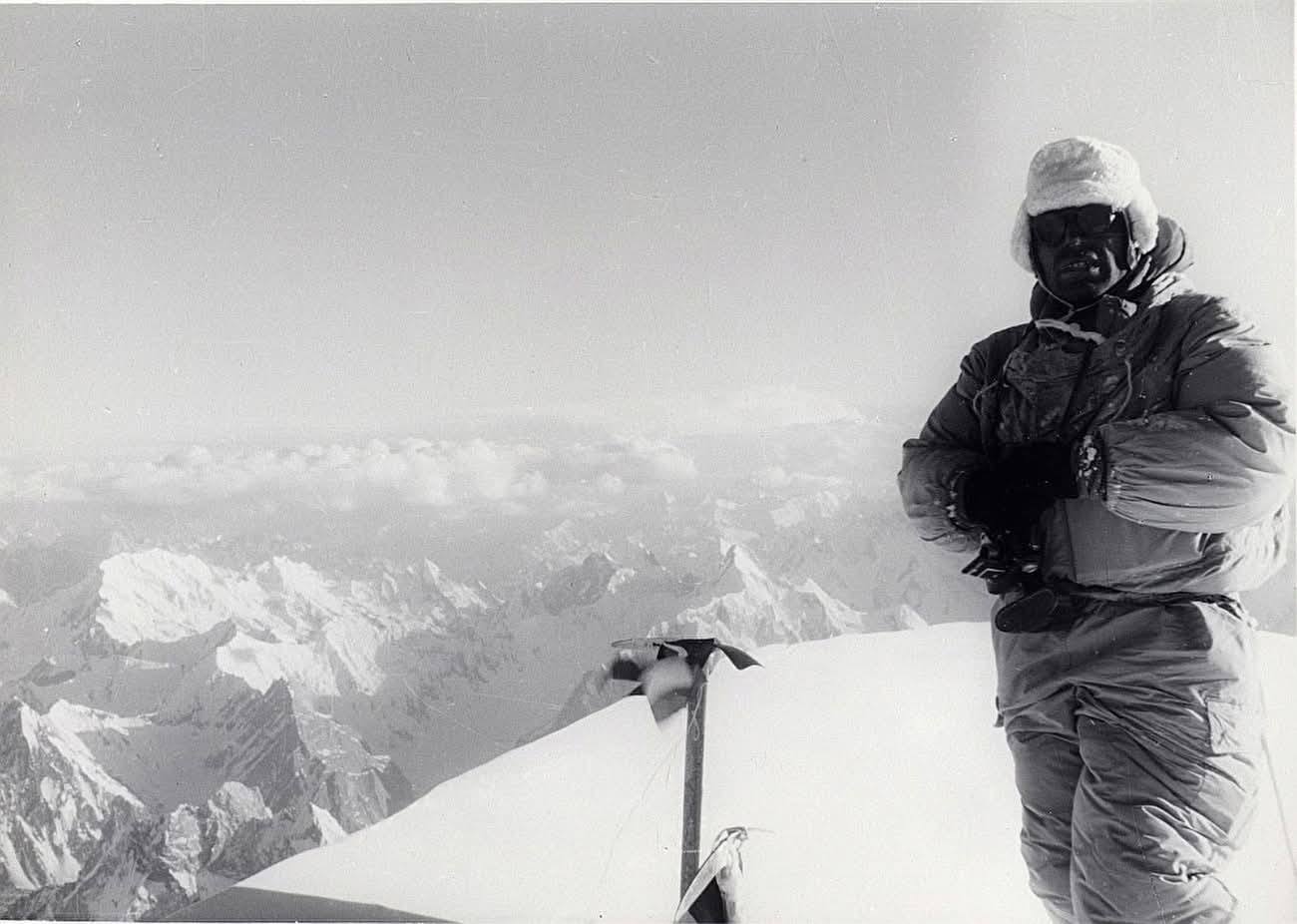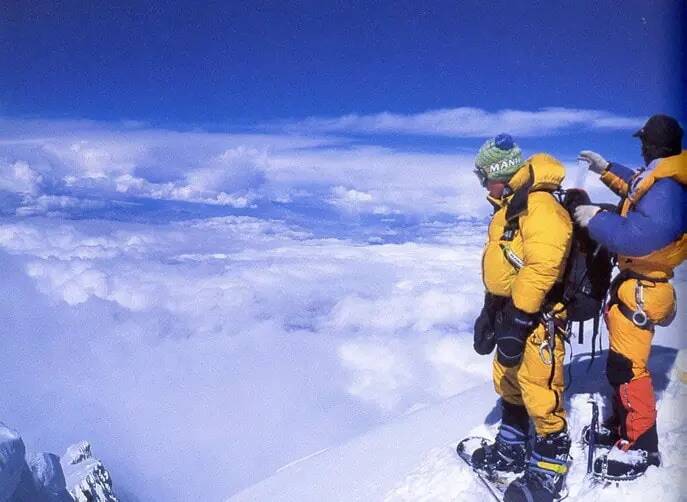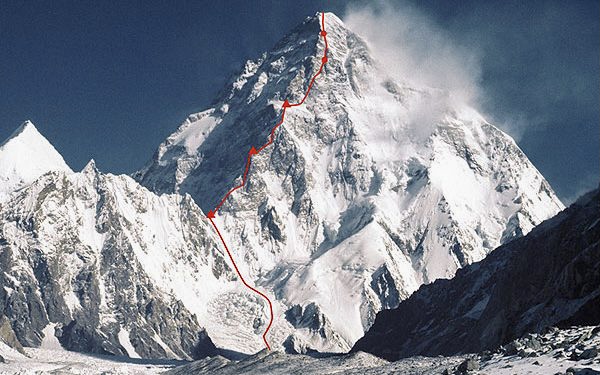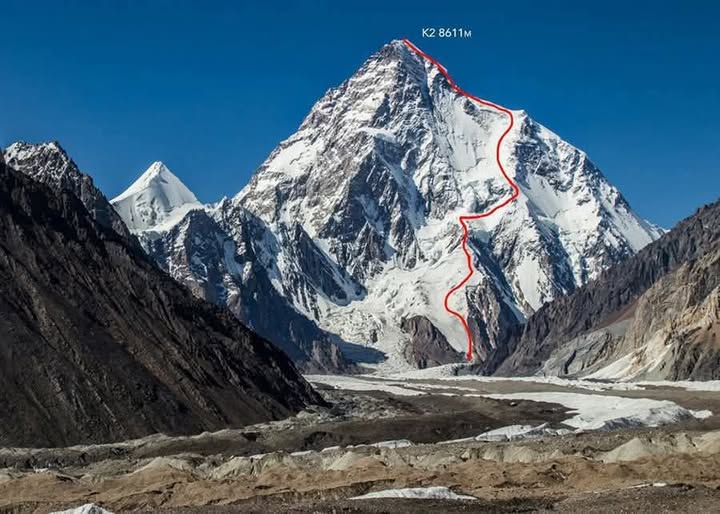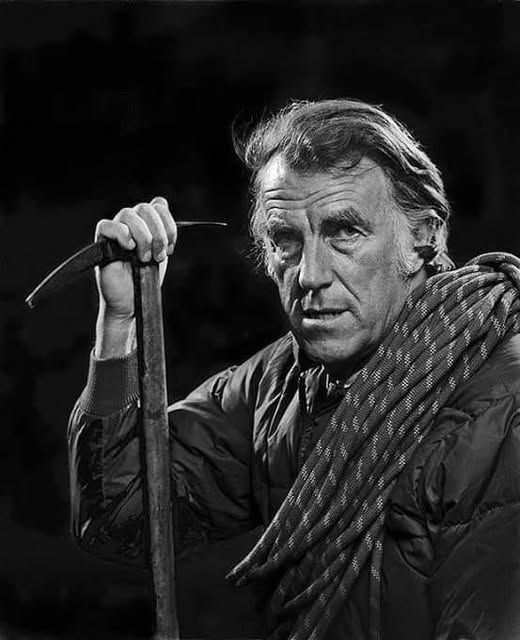In 1856, among the peaks of the Karakoram, a British officer named Thomas Montgomerie stood with a theodolite and looked across a sea of summits. He was part of the Great Trigonometrical Survey of India, mapping the most inaccessible parts of the mountains across Nepal and Bhaarat, and he marked one mountain with a simple notation: K2. “K” for Karakoram. “2” because it was the second peak he recorded in that range. For Montgomerie it was just a number on a chart, a pyramid of ice and rock, 28,251 feet high by his estimation. However, in the decades that followed, K2 would acquire other names, but it is best known as The Savage Mountain.
While Mount Everest rose to higher altitude, K2’s shape and position made it the more forbidding prize. Its slopes fell away with breathtaking steepness, and storms swept its ridges with a ferocity that could strip life away in seconds. The mountain quickly gained a reputation as a climber’s nightmare. Expeditions turned back time and again, battered by avalanches, pinned down by weather, or simply defeated by exhaustion.
By the early 20th century, the Karakoram became the theater of bold new ambitions. In 1909, the Italian mountaineer and aristocrat Luigi Amedeo, Duke of the Abruzzi, sailed for the Baltoro Glacier with a vision of climbing K2. His team explored the great southeast ridge, climbing three thousand feet up before a sheer ice wall halted their progress. The Duke’s retreat set the tone for the next half century: K2 might allow one a glimpse, but not the summit. Yet the ridge he pioneered would bear his name, the Abruzzi Spur.
The Americans arrived next. In 1938, a team led by Charlie Houston, a young doctor and Harvard graduate, climbed up the Abruzzi Spur. They climbed without bottled oxygen, inching higher despite ferocious winds. One of the most daunting features, a one-hundred-foot vertical crack in the rock at 21,500 feet, was solved by the 25-year-old Bill House. The pitch became known as House’s Chimney, a rite of passage for every climber who followed. Houston and Paul Petzoldt reached 26,150 feet, only two thousand feet below the summit, before turning back, exhausted.
The following year, another American team returned, led by Fritz Wiessner, a German-American climber celebrated for his skill on rock and ice. Wiessner and Sherpa Pasang Lama pushed to within eight hundred feet of the top, higher than anyone before them. But the hour was late, and Pasang refused to continue. The pair barely survived the descent. Further tragedy unfolded below: Dudley Wolfe, an American climber stranded at Camp VIII, was left behind in a storm then three Sherpas sent to rescue him disappeared as well. An expedition that had come so close to summit ended in heartbreak.
Then, World War II silenced the mountains, and by the time climbers returned, the map of South Asia had undergone significant changes. India and Pakistan had been born from the partition of the British Raj, and Nepal’s borders were opened for the first time. Expeditions to the Karakoram could no longer hire Sherpas from Nepal; instead, they relied on Hunza porters from Pakistan’s Gilgit Valley. The Hunzas were hardy, strong, and brave, but they lacked the specialized climbing experience of the Sherpas.
In 1953, Charlie Houston came back to K2, determined to settle unfinished business. His American team advanced quickly up the Abruzzi Spur, establishing Camp VIII at 25,500 feet. But the weather, as always, turned against them. For a week they were pinned down in a blizzard at high altitude. Then Art Gilkey, a 26-year-old geologist, developed life-threatening blood clots. The team attempted to carry him down the mountain through hurricane-force winds and deep snow. Near Camp VII, disaster struck. One climber slipped, yanking others from their stance. In a tangled moment of chaos, seven men were hurtling toward oblivion when Pete Schoening, a climber from Washington, stopped the fall with a single, heroic axe belay. It became one of the most celebrated saves in mountaineering history.
But the mountain was not finished. As they regrouped, an avalanche swept Gilkey from his sled and carried him away the the remaining climbers retreated. The Savage Mountain claimed another life.
While Houston and his teammates were still descending the Baltoro Glacier, two Italians were making their way toward K2. Ardito Desio, a 56-year-old geologist and professor from Milan, had been dreaming of the mountain for decades. He had first seen the Baltoro in 1929 and vowed to return. Now, in the wake of Everest’s first ascent by Edmund Hillary and Tenzing Norgay, Desio intended to lead Italy’s own climb.
The Italian Alpine Club selected Desio to lead the 1954 expedition and, after controversial tryouts, assembled a team of eleven climbers. Riccardo Cassin, Italy’s most accomplished alpinist was excluded on dubious medical grounds. Desio, who brooked no challenge to his authority appointed Achille Compagnoni as climbing leader. Lino Lacedelli, a Dolomite veteran, was selected as his partner. Among the others was a rising 24-year-old star from Bergamo: Walter Bonatti.
The Italians arrived in Pakistan with 13 tons of equipment, a $108,000 budget, and an army of porters. It was an expedition in the old, heavy style: fixed ropes, stocked camps, and oxygen sets for the summit pair. They pushed up the Baltoro Glacier, battling snowstorms, river crossings, and desertions. At last, they reached Concordia, where K2 dominated the horizon. The mountain’s pyramid was ringed in cloud, its slopes sheer and glacial. Some stared in awe. Others felt dread.
Base Camp was established at 16,500 feet, beneath the towering south face. From there, the climbers advanced slowly up the Abruzzi Spur. They chopped tent platforms from the ice and fixed three miles of rope. The weather was rarely kind. Winds scoured the ridges, avalanches swept the slopes, and snow buried tents in the night. Then tragedy struck. On June 21, Mario Puchoz, one of the expedition’s strongest climbers, died of pneumonia at Camp II. The loss was a blow to morale, but Desio drove the team upward with military discipline.
By late July, Camp VIII was fixed at 25,400 feet. The summit was within reach. Desio announced that Compagnoni and Lacedelli would make the final attempt. Their success depended on oxygen, and Walter Bonatti was tasked with carrying the heavy cylinders, 40 pounds apiece, to Camp IX, the high camp at roughly 26,500 feet.
Bonatti set out on July 30 with Hunza porter Amir Mehdi, climbing through deep snow as the sun sank behind the ridges. But when they reached the expected site for Camp IX, the tent was not there. Compagnoni and Lacedelli, fearing avalanches, had moved their camp higher and out of sight. Bonatti shouted into the wind, “Lino! Achille!” There was no answer. Darkness was falling, and the slope was too dangerous to descend.
Bonatti and Mehdi had no choice but to bivouac in the open at 26,600 feet, without a tent, sleeping bags, or food. It was the highest open bivouac ever attempted, and the temperature plunged to lethal cold. A blizzard rose, burying them repeatedly in snow. “The terrible cold was paralyzing,” Bonatti would write later. Mehdi’s feet froze solid. Bonatti, teeth chattering, waited for dawn, convinced they might not survive.
At first light, they left the oxygen sets where they bivouacked and began the descent. Mehdi stumbled recklessly downward, frostbitten and delirious. Bonatti followed hours later, barely alive.
That same morning, July 31, 1954, Achille Compagnoni and Lino Lacedelli clipped into the oxygen sets Bonatti had hauled up and began their climb. Above Camp IX infamous Bottleneck was rose, a couloir of deep snow and overhanging seracs. To avoid its dangers, they traversed a vertical rock wall. Step by step, they gained the summit dome. The oxygen, they later claimed, ran out two hours before the top. They pressed on regardless, lugging the now-useless cylinders.
At 6:00 p.m., the two Italians stepped onto the summit of K2. They planted the flags of Italy and Pakistan, embraced, and took photographs. But there was little time to savor the moment. Frostbite was setting in, and the shadows were lengthening. They descended in darkness, stumbling into Camp VIII at 11:00 p.m.
Word of the ascent electrified Italy. The team returned to a hero’s welcome in Rome, flower garlands draped around their necks. But beneath the celebration simmered bitterness. Bonatti felt betrayed. He could not understand why Camp IX had been moved, forcing him and Mehdi into a deadly bivouac. Mehdi, who lost all of his toes to frostbite, never climbed again.
The official expedition account, The Ascent of K2, published in 1955, made little mention of Bonatti’s ordeal. It implied that he had endangered the summit team by trying to climb too high and even suggested he might have stolen oxygen during the bivouac. Bonatti was devastated. He had risked his life to haul the cylinders, and now he was being painted as a liability.
The controversy festered for years. Bonatti, proud and uncompromising, sought vindication. In his autobiography My Mountains, he described the bivouac in searing detail and accused Compagnoni and Lacedelli of deliberately placing Camp IX out of reach. Compagnoni, for his part, doubled down. He accused Bonatti of scheming to preempt the summit and of abandoning Mehdi. The feud spilled into the press and, in 1966, into the courtroom, when Bonatti sued a journalist for defamation.
During the trial, evidence emerged that the accusations against Bonatti had originated with Compagnoni. The court ruled in Bonatti’s favor, ordering a retraction. But the damage to his reputation lingered. For decades he remained a polarizing figure in Italy, his heroism on K2 overshadowed by rumors.
As the years passed, Bonatti continued to climb at the highest level. He made many ascents in the Alps, the Andes, and the Karakoram, including the southwest pillar of the Aiguille du Dru and Gasherbrum IV. He survived the 1961 Freney tragedy on Mont Blanc and capped his career with a solo ascent of the Matterhorn’s north face. Yet the shadow of K2 never left him.
Compagnoni and Lacedelli, meanwhile, lived as celebrated summiteers. Compagnoni returned to life as a mountain guide. Lacedelli opened a shop in Cortina. But in private, the memories of July 1954 gnawed at them.
In 2004, fifty years after the ascent, Lino Lacedelli broke his silence. In his book K2: The Price of Conquest, he admitted that Camp IX had been deliberately moved higher to prevent Bonatti from joining the summit push. “I believe Compagnoni didn’t want Bonatti to reach us,” he wrote. The revelation vindicated Bonatti at last.
It was a bittersweet triumph. Amir Mehdi, who suffered most from that night, died in 1999, his life forever changed by frostbite and hardship. Bonatti, though cleared of the old slanders, had lived half a century with the weight of accusation.
K2’s 1954 climb remains one of the greatest achievements in mountaineering history, but also one of its most contentious. It demanded everything from those who tried to climb it. Mario Puchoz lay buried near the Godwin Austen Glacier. Art Gilkey’s body was lost to an avalanche. Mehdi left his toes on the mountain. Bonatti left a part of his soul.
And yet the Savage Mountain remained unmoved, as it always had. Its steep ridges and swirling storms stood as they had in Montgomerie’s day, when the surveyor marked a simple “K2” on a distant horizon.


